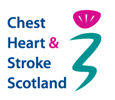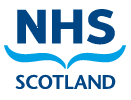Cough control
Learning outcomes
In this section you will learn about one of the most common symptoms of respiratory conditions -cough.
- Ways a cough can be useful or can cause further problems.
- Different causes of coughing.
- How to help your patient/client to take control of their cough.
- Useful tips.
The Good News
Coughing is a strong reflex designed to keep the airways clear of dust, food, liquid or anything “which goes down the wrong way”.
Coughing removes sputum (mucus) which collects normally in the lungs and becomes thicker during a chest infection, pneumonia, asthma episodes or in chronic bronchitis and bronchiectasis.
The Bad News
Coughing causes the airways to narrow or tighten (bronchoconstriction). As airways become tighter or obstructed, the cough becomes less effective, mucus is trapped and breathing becomes laboured and wheezy. Violent coughing can cause further throat irritation, headaches, fatigue, chest pain, bladder leakage and dizziness. Coughing may become a habitual behaviour.




